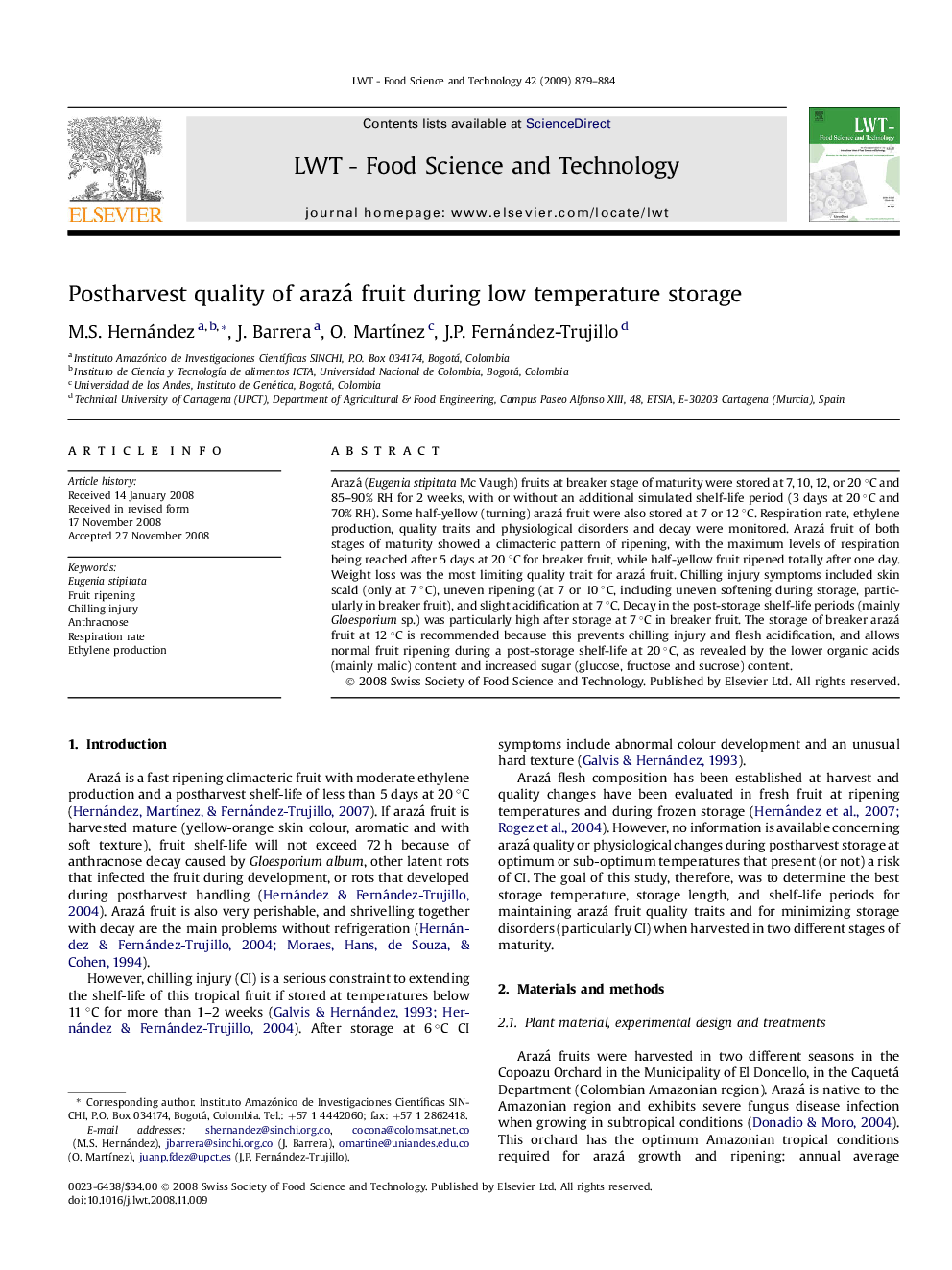| Article ID | Journal | Published Year | Pages | File Type |
|---|---|---|---|---|
| 4565015 | LWT - Food Science and Technology | 2009 | 6 Pages |
Arazá (Eugenia stipitata Mc Vaugh) fruits at breaker stage of maturity were stored at 7, 10, 12, or 20 °C and 85–90% RH for 2 weeks, with or without an additional simulated shelf-life period (3 days at 20 °C and 70% RH). Some half-yellow (turning) arazá fruit were also stored at 7 or 12 °C. Respiration rate, ethylene production, quality traits and physiological disorders and decay were monitored. Arazá fruit of both stages of maturity showed a climacteric pattern of ripening, with the maximum levels of respiration being reached after 5 days at 20 °C for breaker fruit, while half-yellow fruit ripened totally after one day. Weight loss was the most limiting quality trait for arazá fruit. Chilling injury symptoms included skin scald (only at 7 °C), uneven ripening (at 7 or 10 °C, including uneven softening during storage, particularly in breaker fruit), and slight acidification at 7 °C. Decay in the post-storage shelf-life periods (mainly Gloesporium sp.) was particularly high after storage at 7 °C in breaker fruit. The storage of breaker arazá fruit at 12 °C is recommended because this prevents chilling injury and flesh acidification, and allows normal fruit ripening during a post-storage shelf-life at 20 °C, as revealed by the lower organic acids (mainly malic) content and increased sugar (glucose, fructose and sucrose) content.
